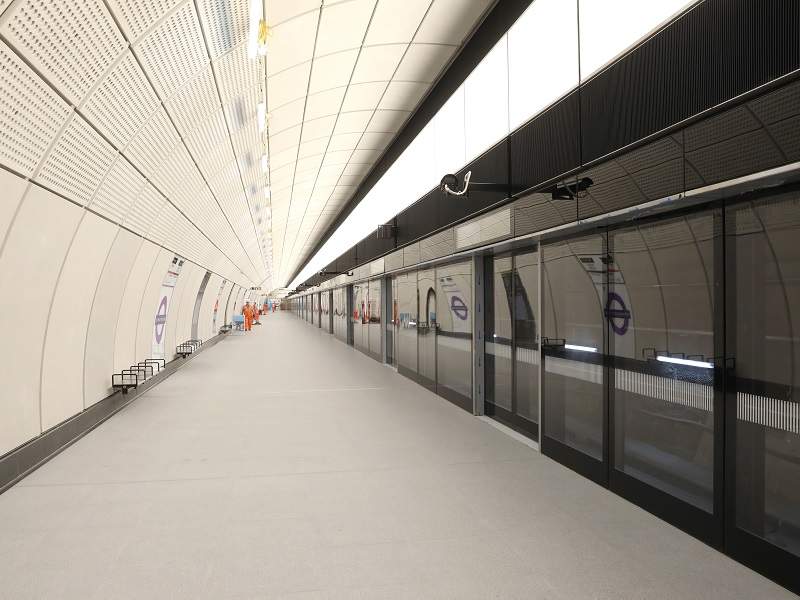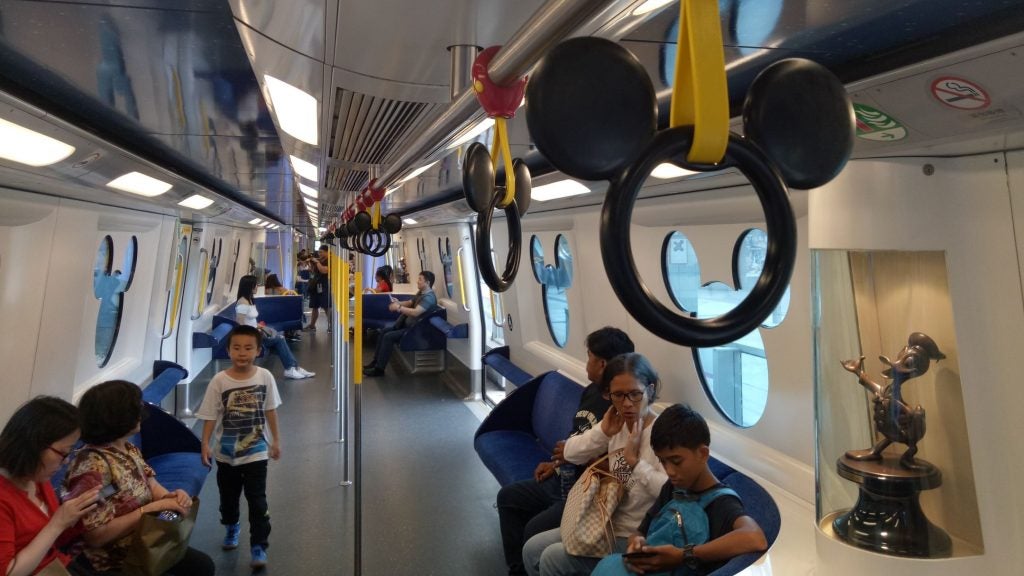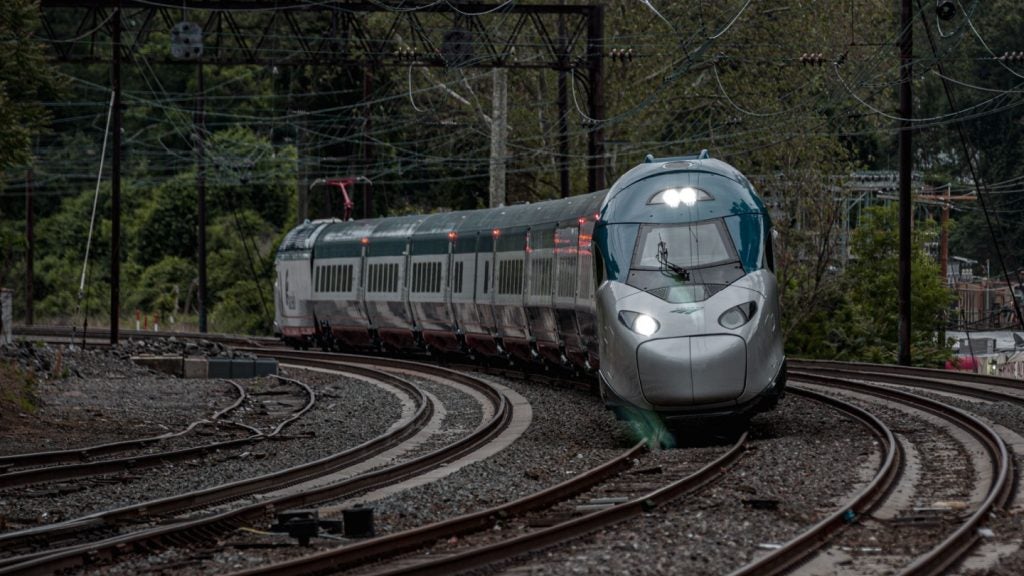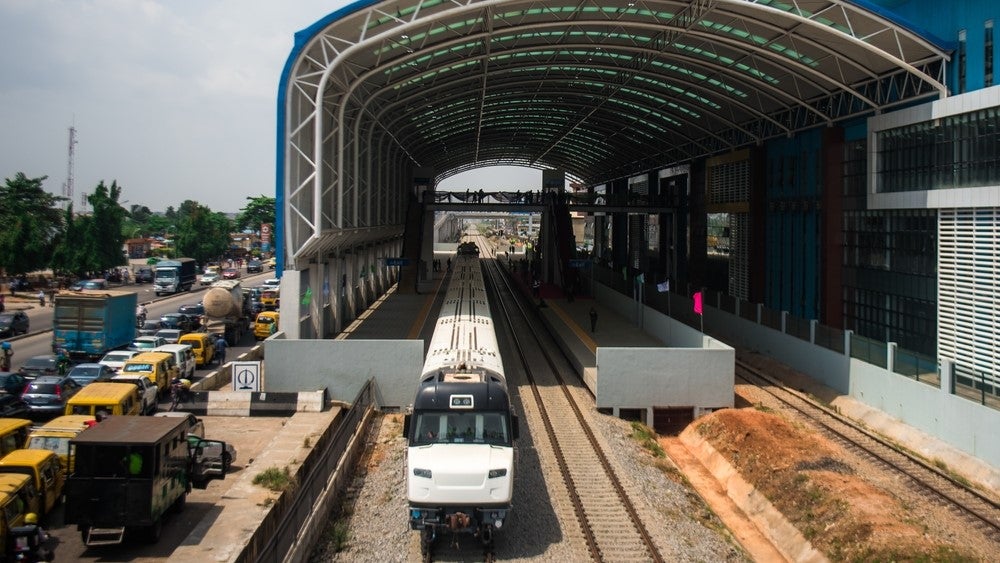
The arrival of the much-awaited Elizabeth line is expected to have a significant impact on the whole of London’s transport network.
Capable of accommodating about half a million passengers per day, the new line, which will be operated by MTR Crossrail, will help even out congestion in central London and provide quick access to the city from nearby hotspots like Heathrow Airport.
Over the past few months, some tests have proved more time-consuming than expected, leading to a delay in the line’s opening from December this year to late 2019. But a recent initiative by MTR Crossrail, aimed at testing accessibility on the new Class 345 trains, has been more successful.
As part of the initiative, the operator invited a range of passengers with disabilities to experience the new line and provide feedback. Among the guests was Glynda Davison, a severely sight-impaired pensioner from Romford, a town in the suburbs of London.
A former children’s centre manager, Davison has learned to deal with London’s notoriously hectic public transport throughout her life, but she’s had a particularly hard time over the past year.
“My husband died last year and he was a train enthusiast, he worked for the London Underground for 44 years,” Davison says. “We travelled the whole of England by train and he was there to tell me where the steps were, where the holes are and to find the seats, but when you have to do it for yourself it’s a bit of a wake-up call.”
How well do you really know your competitors?
Access the most comprehensive Company Profiles on the market, powered by GlobalData. Save hours of research. Gain competitive edge.

Thank you!
Your download email will arrive shortly
Not ready to buy yet? Download a free sample
We are confident about the unique quality of our Company Profiles. However, we want you to make the most beneficial decision for your business, so we offer a free sample that you can download by submitting the below form
By GlobalDataNevertheless, the upcoming Elizabeth line might be just the help she needs to travel through the British capital.
Accessibility on the Elizabeth line: positive signs
Davison has remained positively impressed with what she’s seen on the Class 345 trains. Throughout her two visits of the line, members of staff showed her and her group around and explained where to find essential buttons and features on the carriage. After the tours followed a Q&A session during which the passengers provided feedback on their experience.
Despite being generally happy with the state of the line and how it is equipped for disabled passengers, Davison still highlighted a few downsides.
The emergency buttons, for example, have been placed low on the walls at the level of a wheelchair. “For someone who can see, you can easily find the buttons, but if you can’t actually see, finding the buttons when you want to exit the train can be quite tricky cause they’re not all in the same place and depend on what train you’re travelling on,” Davison says.
Probably the most serious issue brought up by Davison concerns the choice of colours inside the carriage. MTR Crossrail has opted to use silver as the colour for the panels, floors and poles inside the train, which, she says, might be appealing to the eye but lack practicality.
“If you use a cane, which I do, a long cane, then you’re not so bad because your cane is going to touch the obstacle before you do,” she explains. “But if you’re only partially sighted and perhaps don’t use a cane, the chances are the only way you are going to find the pole is when you actually crash into it.”
As a solution, she suggests painting the poles with a brighter colour at eye-level height: “Perhaps they will need to think about adding a bit of a colour contrast in the future. I know that aesthetically it is perhaps not what they want, because they want it to be all lovely and beautiful, but if it’s not usable for everybody then there is no point.”
While finding her way around a train might be tough because the colour used is too homogenous, the absence thereof on the tube platforms creates another problem for Davison. “When you are waiting for a train of any tube line apart from the Jubilee line, you have no idea where the doors are going to be,” she explains, adding that in order to prevent confusion, the Elizabeth line could mark the point where the doors of the train will open.
A drastic improvement in awareness
Despite these minor issues, Davison has very little to complain about the Elizabeth line, and maintains that transport via railway has “improved drastically” both in London and in the UK compared to the past.
She says that there is much more awareness, among railway staff, of the difficulties passengers with disabilities have in busy cities like London.
For Davison, the situation was particularly dramatic as a full-time worker having to travel from Romford station in the years before the arrival of Transport for London (TfL) Rail: “The side door sometimes wasn’t even open, so you were forced to go through the front entrance and then go up the stairs with everybody else in the rush hours, and they were not pleased about that. There was no help or staff around.
“But since it’s changed over to TfL at Romford, the side door is always open, there is always somebody at the top of it and they all ask you if you want assistance.”
A more organised and available staff force makes an invaluable difference for Davison, who is particularly happy with the new customer service in Romford. “It makes travelling by train easier and then you’re more likely to do it,” she says. “Before, you just didn’t do it unless you really had to.”
Changing the public’s attitude
Services have undoubtedly improved since Davison’s commuting days, but while TfL and other railway operators are doing their part, the same awareness and understanding does not come from the general public.
Too often, she explains, she is unable find a free seat on the London Underground because someone has already taken it. “The passengers themselves are not aware that they’re sitting on the disabled seat because there’s only a sign above the seat but there is no colour contrast or anything that designates that it is any different to anything else.”
A friend of Davison’s, equally affected by sight impairments, once clashed with another passenger, who was busy checking her phone, while getting off the train: “She knew her way but she has a hearing and sight impairment and uses the cane. She was aiming to where she knows she needs to go and collided with a lady, who said ‘People like you shouldn’t be allowed out’.”
According to Davison, the episode reflects a widespread lack of tolerance from passengers, especially those who travel to the capital during peak hours. “I am only asking for a bit of consideration that could go our way,” she explains. “It would be good to have trains where disabled seats were of a different colour which would automatically make people think, ‘Why is that colour different?’”. But while hope for such behaviour to change is always the last to die, Davison prefers not to take any risks and avoids “scary” rush hours.
She prefers being late rather than travelling on a busy train but luckily, the Elizabeth line could come to her rescue.
“The Elizabeth line now seems to be much more frequent than it used to be with previous operators,” she says. “Trains used to be every 20 minutes, while these are much quicker, so you know that if it’s too busy you can always get the next train.”







